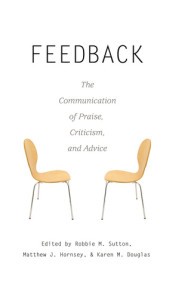Feedback is one of the top 10 influences on student achievement. John Hattie’s research has focused on feedback for a long time.
In 2011 John Hattie contributed to a publication by Sutton, Hornsey & Douglas about Feedback: The communication of praise, criticism, and advice with an article about ‘Feedback in schools’.
This short text is definitely a must-read for everybody trying to learn more about the feedback model behind the Visible Learning research. John Hattie provides some interesting clarifications and explanations to his previous articles about feedback in schools:
- Giving is not receiving: Teachers may claim they give much feedback, but the more appropriate measure is the nature of feedback received (and this is often quite little).
- The culture of the student can influence the feedback effects: Feedback is not only differentially given but also differentially received.
- Disconfirmation is more powerful than confirmation: When feedback is provided that disconfirms then there can be greater change, provided it is accepted.
- Errors need to be welcomed: The exposure to errors in a safe environment can lead to higher performance
- The power of peers: Interventions that aim to foster correct peer feedback are needed.
- Feedback from assessment: Assessment (…) could and should also provide feedback to teachers about their methods.
- There are many strategies to maximize the power of feedback: Shute (2008) provided nine guidelines for using feedback to enhance learning:
- focus feedback on the task not the learner,
- provide elaborated feedback,
- present elaborated feedback in manageable units,
- be specific and clear with feedback messages,
- keep feedback as simple as possible but no simpler,
- reduce uncertainty between performance and goals,
- give unbiased, objective feedback, written or via computer,
- promote a learning goal orientation via feedback,
- provide feedback after learners have attempted a solution.
(cf. John Hattie in Sutton, Hornsey, & Douglas (2011), Feedback: The communication of praise, criticism, and advice.)

